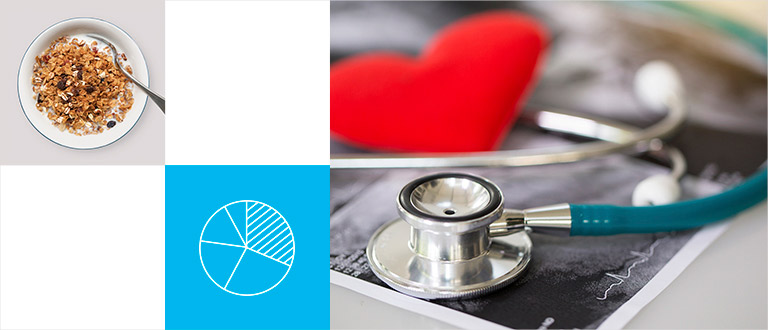Understanding and Testing Fat Content in Food

The fat content of food is a critical aspect of nutrition, influencing consumer choices and impacting the food industry's practices. Consumers consider fat content for various reasons, including health, weight management, and managing conditions like type 2 diabetes. Accurate and reliable fat analysis is crucial for providing consumers with trustworthy nutritional information. This post will clarify the fundamentals of fat in food, exploring testing methods and procedures to ensure accurate labeling and product development.
What is Fat?
Fats are primarily triglycerides – triesters of fatty acids and glycerol. Solid triglycerides are called fats, while liquid ones are oils. The broader term "lipids" encompasses all fat-soluble substances in food, including:
| Table 1: Lipids | |||
| Sterols | Glycolipids | ||
| Monoglycerides, diglycerides, triglycerides | Free fatty acids | ||
| Phospholipids | Fat-soluble vitamins | ||
For nutritional labeling, "fat" represents the total fatty acids (expressed as triglyceride equivalents) regardless of their source. These fatty acids can exist in various forms:
| Table 2: Forms of Fatty Acids in Food | |||
| Free fatty acids | Glycolipids | ||
| Monoglycerides, diglycerides, triglycerides | Sterol lipids | ||
| Phospholipids | |||
Fatty acids are classified by their degree of unsaturation:
| Table 3: Types of Fatty Acids | |||
| Saturated fat | Polyunsaturated fat | ||
| Monounsaturated fat | Trans fatty acids | ||
Fat Determination Methods
Several methods exist for analyzing fat in food, chosen based on the food matrix and whether total fat or specific lipids are being measured. Two primary methods are commonly used:
- Gas Chromatography (GC) Method: This precise method is used for accurate nutritional labeling (including trans fats) and research. GC provides accurate quantification of total fat and individual fatty acids (saturated, monounsaturated, polyunsaturated, and trans fats).
- Solvent Extraction-Gravimetric Method: This quicker method is suitable for rapid fat estimations and relative comparisons between samples. However, results can be approximately 10% higher than GC results due to the co-extraction of non-fat components such as:
| Table 4: Non-fat Components Co-extracted in Gravimetric Methods | |||
| Amino acids | Glycerol | ||
| Organic acids | Low molecular weight carbohydrates | ||
| Sugars | |||
Fat Testing Procedures
Several procedures fall under the umbrella of fat analysis methods:
A. Gas Chromatograph Procedure (FATGC)
The FATGC procedure involves these steps:
- Hydrolysis: Release of fatty acids from food matrices using acid or base hydrolysis.
- Extraction: Extraction of released fatty acids into a mixture of ethyl and petroleum ether. Pyrogallic acid is added to prevent oxidation.
- Esterification/Transesterification: Conversion of fatty acids into fatty acid methyl esters (FAMEs) using boron trifluoride in methanol (BF3/MeOH).
- Gas Chromatography: Quantitative measurement of FAMEs using capillary gas chromatography, comparing them to an internal standard.
- Calculation: Total fat is calculated as the sum of individual fatty acids (as triglyceride equivalents). Saturated, monounsaturated, polyunsaturated, cis, trans fatty acids, and omega-3s are calculated separately.
Our gas chromatography testing can help you ensure regulatory compliance for nutritional labeling. See test details >
B. Gravimetric Procedures
- Acid Hydrolysis: This method uses hydrochloric acid and mixed ethers to extract fat. The acid breaks down fatty acids from glycerides, glycolipids, phospholipids, and sterol esters, also disrupting cell walls and releasing lipids for extraction. Suitable for baked goods, bread, cereals, cooked products, eggs, fish, flour, food dressings, fruits, grains, mixes, pasta, cocoa-containing products, seafood, and vegetables.
- Base Hydrolysis (Roese-Gottlieb): This method, commonly used for dairy products, employs ammonium hydroxide and mixed ethers. Ammonium hydroxide weakens lipid-protein bonds, breaks fat emulsions, and neutralizes acids before extraction. Centrifugation aids in separating the ether layer. Suitable for dairy products like cream cheese, milk, non-fat dry milk, yogurt, and whey.
- Combined Acid & Base Hydrolysis: This method combines acid and base hydrolysis for matrices where fat is difficult to extract. It's used for cheese, cheese blends, cheese-containing entrees, pizza-roll filling, and pizza.
Choosing the Right Method
The choice of method depends on the food matrix and the required level of detail. GC provides comprehensive data, while gravimetric methods offer faster, simpler analysis for comparative purposes. Understanding the limitations of each method is crucial for accurate interpretation of results.
Conclusion
Accurate fat analysis is essential for both consumer information and food product development. By understanding the different methods and procedures available, food industry professionals can ensure accurate nutritional labeling and maintain compliance with regulations. Choosing the appropriate method depends on the specific needs of the analysis and the characteristics of the food product.
Our gravometric testing can help you make quick fat determinations and comparisons in multiple samples. See test details >
Let's Get to Work!
Submit your order online and ship your samples today. If you have questions, we are always here to help.
Medallion Labs+
A food testing program designed with mid-market and enterprise food and ingredient manufacturers in mind.
If you want to learn more about the basics of nutrition labels or you’re curious about testing and analyzing other nutrients in the goods you manufacture, check out our recent blog post, Nutrition Labels 101: What’s Required? What’s Optional?